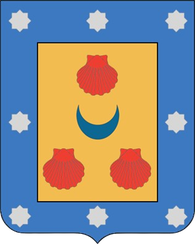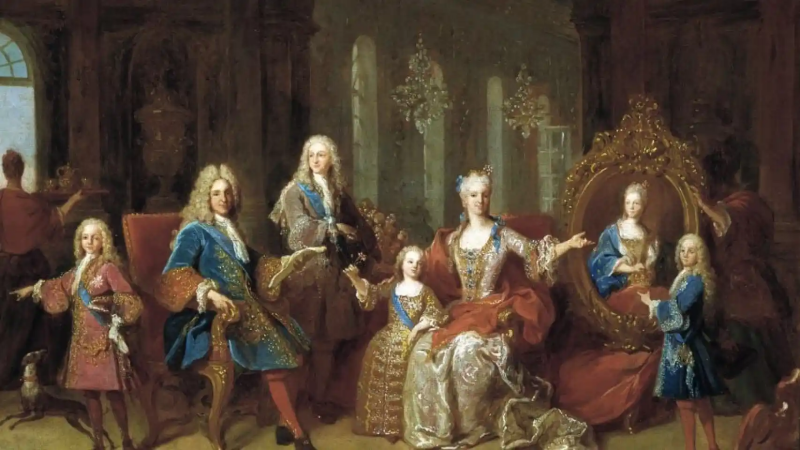Dynasty
The surname Belaustegui has various meanings:
1. Bela = Raven, us = no known meaning, tegui = place. --> Belaustegui = Place of Ravens
2. Bela = Grass, us = no known meaning, tegui = place --> Belaustegui = Place of grass
According to historical records, the presence of the surname Belaustegui in the Basque Country dates back to ancient times. The Belaustegui family has had a notable influence in different fields, such as politics, academia, and the arts.
Throughout history, several individuals with this surname have excelled in various artistic and cultural fields. The surname Belaustegui has also been adapted in other countries and cultures, although it is more frequently maintained in its original form in the Basque Country. Some variants of the surname Belaustegui include Belastegui and Belauste. Tradition and rootedness in Basque culture are important aspects in families bearing the surname Belaustegui. The surname Belaustegui can be interpreted as “beautiful house” or noble.
There is a neighbourhood in Amorebieta, Merindad de Zornoza, and judicial district of Durango (Biscay) that bears the name Belaustegui, from where those with such surname come from, who settled in Amorebieta and Echano, establishing armorial houses. Other families founded houses in Durango, Gordejuela, and Guernica. In the mid-sixteenth century, a line of the Belausteguis from the parish of Echano moved to the city of Lerma (Burgos), where they settled. The Belausteguis from Biscay also moved to Guipuzcoa, settling in Placencia, Zumárraga, and Vergara. José Ignacio de Belaustegui Gorostiaga Alzola y Oleaqui, who was born in the town of Zumárraga, Guipuzcoa, joined the Order of Calatrava on February 26, 1700.
Among other documents, the General Archive of the Indies contains the passenger information and licence record of José de Belaustegui, a merchant born in Guernica, in the year 1782.
On September 7, 1963, Roberto Agustín Belaustegui Fernández married Dori Lobo in Madrid. The couple had 8 children, 4 girls and 4 boys, with the surname Belaustegui Lobo: María Amparo (1964), Nuria (1966), Roberto (1968), Alicia (1970), Andy (1972), Fernando (1974), Irene (1975), and Javier (1978).
Subsequently, Javier married years later and had two children, one of them being Roberto, who would later become the first king of Zavidia.
Coats of Arms
“Or, three scallop shells gules arranged in triangle, and in between them, a crescent azure. Bordure azure, charged with eight estoiles argent. Motto: 'Egija adimen argi hijotzak maite begi' ('Truly the mind loves the light of the eyes'), inscribed in letters gules upon a scroll or. For crest, a crescent azure, with a crow proper perched upon it. For supporters, two foot warriors armed with sabres, holding a lance, from whose shaft hangs a banner argent, charged in its centre with a crescent azure, upon which is perched a crow sable.”

Symbolism of the Coats of Arms
Taking into account the attire worn by knights in battle during the Middle Ages (armor, helmet, etc.), which made them unrecognizable, it was necessary to find a method of identification and distinction between opponents that was revealing, precise, and quick at a certain distance. Hence, arises the formula of displaying on their shields tinctures, emblems, etc., that would differentiate them unequivocally and uniquely on the battlefield.
Therefore, heraldic symbology, in its origins, sought shapes and colors that were noticeable and allowed its bearers to be distinguished at a glance. Perhaps the tendency of some authors to give meaning or content to all emblems (charges, ordinaries, etc.) and heraldic tinctures is exaggerated, yet there are several treatises that study the symbolism of coats of arms in a very exhaustive way, including:
“Ciencia Heroyca,” by Don José de Avilés. Year 1725; and “Adarga Catalana,” by Don Francisco Xavier de Garma y Duràn. Year 1753. According to the Laws of Heraldry, those who bear gold on their shields are obliged to do good to the poor and defend their princes, fighting for them until their last drop of blood. Gold symbolizes topaz. In the coats of arms of kings, it is called the “sun,” in those of nobles with the titles of Duke, Marquis, Count, etc., “topaz,” and in the general nobility “gold.” In its relation to celestial bodies, gold is the Sun; of the twelve signs of the Zodiac, Leo; of the elements, fire; of the days of the week, Sunday; of the months of the year, July; of the trees, the cypress; of the flowers, the sunflower; of the birds, the rooster; of the quadrupeds, the lion, and of the fishes, the dolphin.
Silver in coats of arms is called Luna when referring to those of sovereigns; in those of titles, pearl, and in those of other nobles, silver; it signifies whiteness, purity, and those who bear it in their arms are obliged to defend maidens and protect orphans. Silver symbolizes the pearl in relation to gemstones. Of celestial bodies, the Moon; of the signs of the Zodiac, Cancer, and of the elements, water; of the days of the week, Monday; of the months of the year, January and February; of the trees, the palm tree; of the flowers, the lily; of the birds, the dove, and of the animals, the ermine.
The color red, called gules in Heraldry, symbolizes valor, intrepidity, and bravery. Those who bear this color in their coats of arms are obliged to assist, protect, and defend the unjustly oppressed. It represents the ruby, and regarding the signs of the Zodiac, it corresponds to Mars, Aries, and Scorpio; as an element, fire; the day, Tuesday, and the month, October; the metal, copper; the tree, the cedar, and the flower, the carnation; in birds, it corresponds to the pelican. In the coats of arms of kings and princes, gules is called Mars; in titles, ruby, and in the general nobility, gules.
The enamel azure (blue) symbolizes royalty, serenity, and beauty. Those who bear it in their arms are obliged to assist the faithful servants of their princes, who “remain unrewarded for their services.” In precious stones, it represents the sapphire, and concerning the signs of the Zodiac, it is related to Taurus and Libra. Its element is air; its metal, steel; the day of the week, Friday; the months, April and September; its tree, the poplar; the flower, the violet; its animal, the chameleon, and its bird, the peacock. Azure is called Jupiter in royal coats of arms, sapphire in titles, and azure in the nobility.
The banner is the signal or insignia with which a troop is distinguished. A symbol of power and lordship over hosts and vassals. The flag was used more in crests than as a symbol on the shield; however, within the blazon, it usually comes from knights who belonged to the Military Order “Cavalry of Reason,” founded by Don Juan I, king of Castile, in the year 1385, using a banner as a badge.
The bordure symbolizes protection, favor, and reward; likewise, the coat that knights wore for war and, upon leaving the fight, displaying it stained with enemy blood, they were rewarded with the addition of the border to the shield, as a badge of valor. The bordure is also used to combine coats of arms, with the particularity that the arms located in the bordure always have a secondary character.
The crescent moon, in heraldry, has been considered a good omen and a presage of greatness. It is said of Milon's dream, son of William, Count of Burgundy, who the night before being elected Pope, with the name Calixto II, in the year 1119, dreamed of an angel who placed a crescent moon under his knees, warning him, as it happened later, that he would be the Head of the Universal Church. Hebrews celebrate the festivals they called Neomenias (in memory of their pastoral past), and among the Arabs, it is a distinctive sign of power and nobility. Charles I instituted, in the city of Messina, the Military Order of the Crescent, and its knights and some of their descendants bore crescents on their arms.
The raven, in heraldry, symbolizes “the bold and spirited attitude in the face of powerful adversaries, risking oneself in defence of those to whom benefits are owed.”
In conclusion, the House of Belaustegui is a house belonging to and descended from the general nobility, united with the battlefield, knights, lords, and various nobles.
In total, it embodies the values of doing good to the poor and defending their princes, fighting for them until their last drop of blood, defending maidens and protecting orphans, providing assistance, shelter, and defence to the unjustly oppressed, serenity and beauty (beautiful/noble House), power and lordship over hosts and vassals, protection, favor, and reward, a good omen, and a presage of greatness, and a bold and spirited attitude in the face of powerful adversaries, risking oneself in defence of those to whom benefits are owed.




Crea tu propia página web con Webador